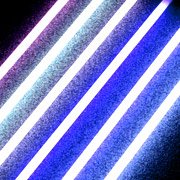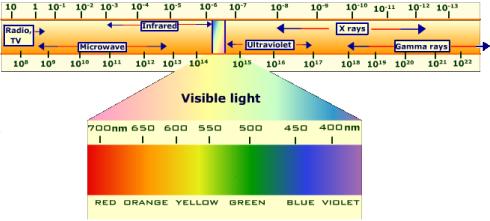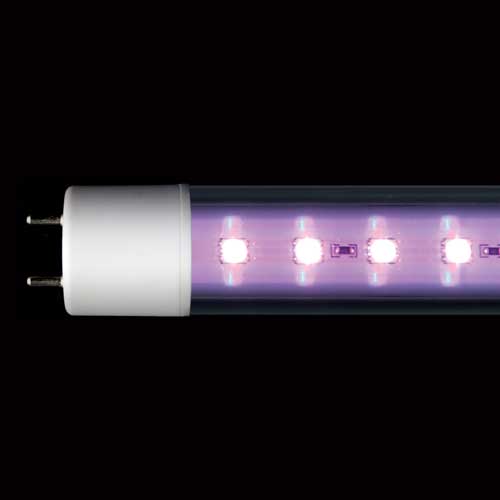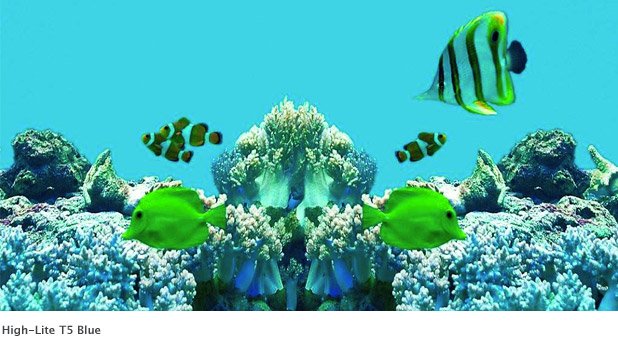So you’ve decided to start up an aquarium. You’ve got an idea of what you want and the type of aquatic setup to nurture; you’ve even gone as far as purchasing your first aquarium and now you need to think about the lighting you will use, simple right?
Wrong! As a beginner, aquatic lighting can probably be one of the most confusing concepts to get your head around. When you type “aquarium lighting for beginners” into google immediately you’re bombarded with jargon like watts per gallon, Colour temperature and full spectrum not to mention the endless type of lighting that is actually available for your tank.
Sifting through all this information can prove to be more confusing than helpful and more often than not inadequate research or failure to understand what you are buying can lead to an expensive and useless purchase. But don’t worry, we are here to help.
We know just how puzzling choosing lighting can be, so we’ve put together a beginner’s guide on how to go about choosing the best lighting for your tank. Before choosing any lighting, there are several things to consider: what lighting is needed, why, and the benefits to your aquarium?
Requirements
What lighting you need, will depend greatly on four major factors:
- The sort of tank you keep will impact greatly on the type of lights you will need. Is your tank freshwater or marine? Do you have a fish only tank or do you house corals or aquatic plants too?
- An extension of the first point is to then consider what types of species you will be keeping in your aquatic environment. Some types of fish require little or no lighting, whereas other species require very specific cycles of light.
- Next, the size of your tank will also affect the lighting you need. You need to review how deep your tank will be and how much water it will hold.
- Finally, and probably the most important thing to consider is your budget. If money is in endless supply then you won’t need to worry, but if like most you live on a budget then working out what you are willing to spend is paramount. You may have already shelled out a substantial amount on the setup of a new tank. There is such a wide range available and prices can vary greatly so researching is definitely important.
Once you have determined these factors, you are ready to start looking at the types of lighting useful for specific tank setups.
Before this, let’s look at the basics of what aquarium lighting is and why it is so important?
Benefits
The general principle behind aquarium lighting is to reproduce with accuracy the natural conditions under which your aquatics inhabitants would ordinarily live, ultimately recreating a comfortable and harmonious living space for them.
One aspect of this is the type of light that they are exposed to. For fish it can be as basic as day and night, but plants and corals, however, need and use sunlight to grow. But it isn’t always as simple as that either. The amount of light needed in these setups need to be controlled. For instance, too little light and your plants and corals won’t grow, and may eventually die. Too much light and you could find yourself with a tank full of algae.
Colour temperature is also something to consider when using lighting for specific aquariums. This is the absolute temperature (expressed in degrees Kelvin – K) of the light produced. In basic terms, light is made up of seven colours. Sunlight (measured at 5500K) emits all of these colours making the light appear white.
Lights with a lower Kelvin rating emit a reddish hue and a higher kelvin rating emits cooler bluish hue lights. To make things even more complicated, light changes the further down into the water it penetrates. Due to the vast depths of the ocean, certain light waves are absorbed meaning only some colours of light waves will reach the bottom. Are you still with us?
To sum up, light is complicated, but thanks to the ever-changing technologies available to us, and the advancement in the home aquatics industry, it is possible for us to replicate these delicate parameters without mashing our brains too much, while at the same time creating a thriving and happy aquatic environment. The main categories aquarium light can fall under are as follows:
- T5
- T8
- LED
- Metal Hsllides
So now that we have covered the basics of aquarium lighting, it is time to determine what is actually best for you and your aquarium.
Fish-only aquarium Lighting
It’s worth bearing in mind that lights do not heat your water and keep the fish warm. If you have a tropical tank, it is the job of your heater to warm up the water. It is important to understand that fish, like all living organisms, need to be exposed to light and dark cycles to function correctly. Most of the time, fish-only aquaria require less attention on lighting, unless of course your tank is kept in the dark, in which case lighting would become paramount to the survival of your fish.
Too much or too little light can cause fish to become stressed, which impacts their health greatly. But in general, lighting in fish-only tanks is used mainly for aesthetic purposes, making your tank look as beautiful to the eye as possible. The colours in your fish can be greatly enhanced with the use of light. If you are a beginner, then it is unlikely you will be delving into marine aquatics just yet. If you are new to fish keeping we don’t recommend this either, as marine aquarium keeping is a completely different kettle of fish all together. But for those, which have already tried their hand at Freshwater and are ready to upgrade their tanks, we have some recommended lighting for you too.
Coldwater/ Tropical Freshwater Lighting
With a cold water or tropical freshwater tank setup little or no lighting is acceptable. As long as your aquarium is setup in a place where there is an abundance of natural light but it is not exposed to direct sunlight, then the lighting that often comes with your aquarium is normally sufficient. Remember light in this setup is mainly for the fish keeper and not the fish themselves.
Fish-only tanks do not require lighting as a necessity and is used more often for visual purposes. A strategically placed light, however, can accentuate the natural colours in your fish making them appear brighter and bolder. Depending on the colours in your fish, and the theme of your aqua-scape, there is a range of lighting available to you.
As long as your fish are not kept in perpetual light (or darkness), the light itself will not generally affect the health and well-being of your fish. You are pretty much free to use what you want. Most often than not, fish keepers will use lights to enhance the look of the aquariums. Remember any full spectrum light can encourage the growth of algae, so it is important to schedule your lights to minimise this. For fish only aquariums, we recommend the following:
- Juwel Colour Lite – this will particularly enhance the reds and blues of any fish you have as well as bathing your aquarium in natural looking light. Colour-lite ranges in intensity and can be used in conjunction with a reflector to really intensify the look of your tank. It is available in the T5 or T8 range.
- Arcadia T8 Tropical LED Tube Light – this specific light has been designed and has a low colour temperature – which helps to high light the reds and oranges in your aquariums. Not only will it provide your fish with a natural glowing light similar to sunlight, but it will highlight parts of your tank and is perfect for use when you want to start growing aquatic plants. The bulbs are also made using LED bulbs, making them highly efficient and durable.
Algae growth
It is important to remember that too much light can encourage the growth of unsightly algae and leaving your tank lights on for prolonged periods of time can cause an outbreak.
Similarly, too much light can cause your fish to remain in a stressed state, decreasing their overall health. But a well-controlled setup can be very rewarding as a hobbyist, as certain hues and lights can really enhance your work of art, making your tank a real stand-out feature of your home.
Planted aquaria
In actual fact lighting becomes more important when your tank contains aquatic plants. All Plants land or aquatic use three ingredients – light energy, carbon dioxide and water, in a chemical process called Photosynthesis. This process allows plants to produce their own food which in turn is needed to grow healthy and strong. In their natural environment, aquatic plants use sunlight to undergo this process.
Most freshwater plants come from natural conditions whereby they are exposed to sunlight often through shallow sometimes murky water. In the world of home aquatics, plants need help with this, thus the need for aquarium lighting. Earlier we looked at the breakdown of light and its “kelvin rating” this becomes relevant when talking about plants.
If you have any aquatic plants then it is important to use a light that emits the full spectrum of light, (just like the sun) with a colour temperature between 5500-6500oK. Plants absorb certain waves from this light, and these waves are then used in specific plant processes such as growth and photosynthesis. There are a number of lights available in today’s market, specifically designed to enhance and optimise plant growth in aquariums, by specifically emitting the waves of lights that plants use. There are some that we particularly recommend:
- Juwel Day-lite and Juwel Warm-Lite Both of these come in T8 & T5 sizes, and are very effective when used together. Both work together to enhance the colouring of your tank. The Day-Lite has a colour temperature of 6500K which is perfect for promoting plant growth and The Warm-Lite is 2900 Kelvin that emits redder light which helps with plant photosynthesis. The light is designed to really illuminate your aquarium and would look perfect in any tropical setup.
- Arcadia Plant Pro – this particular T5 bulb has been specifically designed to combine the blue and red waves of light that is needed to encourage plant growth. It has a high light output which promotes plant health, but also appears bright white, so it will really enhance the colours. Plant pro is excellent for growing light demanding aquatic plants
- Arcadia Metal Halide Bulb 5200K – these are probably the most expensive range of bulbs you can use in an aquarium. Metal Hallide bulbs illuminate with very high intensity from a single compact point and can be used alongside other fluorescent less intense bulbs to really highlight the colours of plants and fish in your tank.
Fish Only tanks (Marine)
If you are a beginner, then it is unlikely you will be delving into marine aquatics just yet. If you are new to fish keeping we don’t recommend this either, as marine aquarium keeping is a completely different kettle of fish all together. But for those, which have already tried their hand at Freshwater and are ready to upgrade their tanks, we have some recommended lighting for you too.
Before buying lighting for your tank it is important to review what type of marine setup you looking to keep and understand how lighting will hinder or benefit these particular setups. Remember the basics are just the same, fish need light cycles to regulate and too much light can stress them and cause illness. Some marine fish are night dwellers, and in their natural surroundings will come out after dark to avoid predators. So depending on what species of marine fish you keep lighting could indeed become important to their health. Generally speaking, in fish only marine set ups lighting isn’t a necessity and just like a tropical freshwater setup, the lighting is used for visual effect. Many marine fish are beautifully coloured and often a good choice of light will really make your tank glow and accentuate these incredible colours.
For fish only tanks we recommend and of the Arcadia T5 Marine range. They come in several different styles and although they are all designed to promote the growth and health of coral, most of these can be used in a Marine fish setup, to really highlight and bring out the luminous colours in fish. Running on a T5 output means they are more efficient then.
Corals and Reef tanks
Similar to plants, Corals and reefs need certain waves of light to survive. This is because they have symbiotic algae that live within the coral that create oxygen among other things they need to survive. Algae need sunlight to grow and develop and so for this reason lighting in coral and reef tanks is most important. Corals don’t tend to do well in murky or opaque water so crystal water and a good light is paramount for their well- being.
Corals are among the most beautiful and intricate organisms to have evolved on our Earth, and thanks to home aquatics and advances in fish and reef keeping, we can enjoy their delightful colours and structures in the comfort of our own home. If you have reef tank, you can really show off you hard work with the use of a cleverly chosen marine light. Many are now manufactured to combine the colour temperature (Around 10000K – 15000k) needed for optimum coral growth. Corals use the blue waves in light to grow. Bulbs with a high kelvin rating appear a blueish colour to the eye.
Have you ever wondered why things look so blue in the deeper parts of the ocean? This is all down to what waves of light make it down there, the reds, yellows, greens all get absorbed whereas the blue waves of light travel further thus giving us a blue appearance. The correct lighting will replicate these natural conditions giving you the best chance of building a beautiful and healthy aquatic environment.
So for your reef tanks, there are a number of weird and wonderful lights that you can use to promote your reef tank. Most of which have been designed to replicate the intensity and waves of light that would be found in natural habitats.
- Arcadia High Output LED Spotlight – this is a fantastic high output light which is available in three different colours. It is fully submersible and can be moved around your tank quite freely. These stunning lights are far more efficient than their traditional T8 & newer T5 counterparts and last longer making them far more cost effective.
- Juwel T5 High-Lite Blue – this light has been developed to replicate the light that corals would receive up to 6 metres in depth. The bulb gives off a soft blue tone and really helps to accentuate the fluorescents in corals and fish.
- Arcadia Marine White Metal Halide Bulb 14000K / 20000K – for those really looking to splash out on some fancy lighting, metal halide bulbs are the ones.
The bulbs illuminate with very high intensity from a single compact point giving your aquarium a rippling effect. They can be used in alongside other fluorescent lighting to really bring out the colours in your tank, and also promote the growth of corals.
As we can clearly see, choosing aquarium lighting isn’t as simple as picking the brightest bulb and installing this in your tank. Just like the art of fish keeping itself, light needs to be balanced and well-chosen in order to benefit your aquarium and keep your inhabitants healthy. After all a healthy aquatic community is a happy one. We would like to know if any of you are starting out in the aquatics world and any problems you have experienced while choosing light. Similarly if you have now gotten to grips with the concept of lighting, what tips do you have for anybody starting out?










